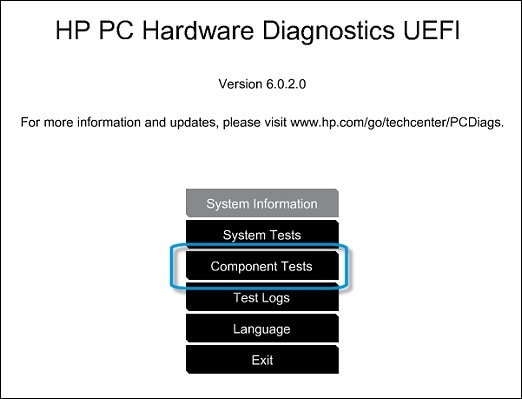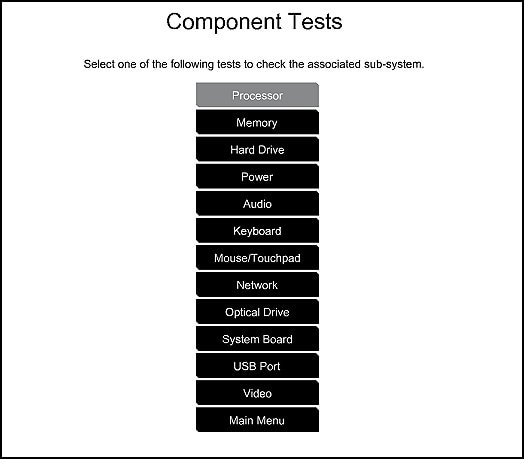-
×InformationNeed Windows 11 help?Check documents on compatibility, FAQs, upgrade information and available fixes.
Windows 11 Support Center. -
-
×InformationNeed Windows 11 help?Check documents on compatibility, FAQs, upgrade information and available fixes.
Windows 11 Support Center. -
- HP Community
- Notebooks
- Notebook Wireless and Networking
- Re: Wi-Fi not connected...Network is connected

Create an account on the HP Community to personalize your profile and ask a question
11-27-2017 03:12 PM
When I troubleshoot the wireless connection the diagnostics tell me that the IP Configuration is not valid and it cannot fix it automatically. I cannot figure out how to fix it myself. Can it be fixed? This computer has been off for 3-4 days but operated normally prior.
Solved! Go to Solution.
Accepted Solutions
11-29-2017 07:29 AM
Thanks for reaching out to us on HP Support Forums. I came across your post and would like to assist.
I understand that you have an HP TouchSmart Notebook, I read that the wifi connection on the notebook is not working. The diagnosis reports that the IP configuration is not valid and it cannot fix it automatically. I appreciate the steps you have performed and have certainly done a good job.
Did you run the diagnosis through the HP Support Assistant?
Meanwhile, I recommend you to perform the following steps to isolate the issue and arrive at a fix. These steps help in fixing such wireless connectivity related issues.
First, we have a step by step guide to walk you through the troubleshooting process here:
Troubleshooting Your Wireless Network and Internet Connection
A second option, is to try these steps:
Powercycle the network:
1. Shut down your notebook.
2. Unplug the power to your router.
3. Unplug the power to your modem.
4. Wait at least 45 seconds.
5. Plug in the modem, and wait for it to come back online.
6. Plug in the router, and wait for it to come back online.
7. Turn on your notebook, and test your connection.
Disable the Power Off option for the adapter:
1. Open Device Manager. (Win Key+R > type devmgmt.msc > OK)
2. Expand the Network adapters.
3. Right click on the Ethernet/Wireless Adapter and click Properties.
4. Click the Power Management tab.
5. Remove the check mark beside Allow the computer to turn off this device to save power.
6. Click OK.
7. Test.
Reset the TCP/IP settings on your PC:
1. Go to your start screen/menu and type CMD.
2. Right click on the command prompt icon and chose Run as administrator.
3. In the window that opens type "netsh int ip reset resetlog.txt" without quotes, and press enter.
4. Restart your PC and test.
It may also help to reset the winsock catalogue:
1. Go to your start screen/menu and type CMD.
2. Right click on the command prompt icon and chose Run as administrator.
3. In the window that opens type "netsh winsock reset" without quotes, and press enter.
4. Restart your PC and test.
Reinstall the network adapter drivers:
1. Download the drivers from here but do not run them yet.
2. Go to your start screen/menu and type Device Manager.
3. Expand Network adapters.
4. Right click on the wireless adapter and choose Uninstall.
5. Run the downloaded drivers from step 1.
6. Restart your PC and test.
Test an ethernet connection:
Self explanatory. Test if the issue persists on a wired connection to rule out the wireless adapter hardware so troubleshooting can be directed towards the right areas.
Test another connection:
Many people rule out their home network as an issue if another device is working on the same network. Networking is not that simple. Each device interacts differently with your router or modem and it is impossible to rule out settings in that device until the notebook has been tested on another network.
If those three steps do not resolve the issue, try this document published by Microsoft for networking issues: Wired and wireless network problems. You can change the operating system with the dropdown in the upper-right corner of the document.
You may also try to run the hardware test on the wifi card using the hardware diagnosis. The following steps will help:
- Please download and run the HP Hardware diagnosis menu on your laptop via this link: http://ftp.hp.com/pub/softpaq/sp82001-82500/sp82165.exe
- Restart the laptop once this is installed. This will complete the installation.
- Shutdown the laptop.
-
Turn on the computer and immediately press Esc repeatedly, about once every second. When the menu appears, press the F2 key.
-
On the main menu, click Component Tests.
Figure : Selecting Component Tests from the main menu

-
The Component Tests menu displays. Your Component Tests menu might be different, depending on the components installed on your computer.
Figure : Sample list of Component Tests

-
Wireless Module Test - The Wireless Module Test checks your system to make sure the wireless module was properly detected by the BIOS and is enabled for use.
To run the test, click Wireless Module, and then click Run once. The Wireless Module Test takes 30 seconds to complete.
I sincerely hope this fixes the issue. Please feel free to keep me posted. All the best! 🙂
11-29-2017 07:29 AM
Thanks for reaching out to us on HP Support Forums. I came across your post and would like to assist.
I understand that you have an HP TouchSmart Notebook, I read that the wifi connection on the notebook is not working. The diagnosis reports that the IP configuration is not valid and it cannot fix it automatically. I appreciate the steps you have performed and have certainly done a good job.
Did you run the diagnosis through the HP Support Assistant?
Meanwhile, I recommend you to perform the following steps to isolate the issue and arrive at a fix. These steps help in fixing such wireless connectivity related issues.
First, we have a step by step guide to walk you through the troubleshooting process here:
Troubleshooting Your Wireless Network and Internet Connection
A second option, is to try these steps:
Powercycle the network:
1. Shut down your notebook.
2. Unplug the power to your router.
3. Unplug the power to your modem.
4. Wait at least 45 seconds.
5. Plug in the modem, and wait for it to come back online.
6. Plug in the router, and wait for it to come back online.
7. Turn on your notebook, and test your connection.
Disable the Power Off option for the adapter:
1. Open Device Manager. (Win Key+R > type devmgmt.msc > OK)
2. Expand the Network adapters.
3. Right click on the Ethernet/Wireless Adapter and click Properties.
4. Click the Power Management tab.
5. Remove the check mark beside Allow the computer to turn off this device to save power.
6. Click OK.
7. Test.
Reset the TCP/IP settings on your PC:
1. Go to your start screen/menu and type CMD.
2. Right click on the command prompt icon and chose Run as administrator.
3. In the window that opens type "netsh int ip reset resetlog.txt" without quotes, and press enter.
4. Restart your PC and test.
It may also help to reset the winsock catalogue:
1. Go to your start screen/menu and type CMD.
2. Right click on the command prompt icon and chose Run as administrator.
3. In the window that opens type "netsh winsock reset" without quotes, and press enter.
4. Restart your PC and test.
Reinstall the network adapter drivers:
1. Download the drivers from here but do not run them yet.
2. Go to your start screen/menu and type Device Manager.
3. Expand Network adapters.
4. Right click on the wireless adapter and choose Uninstall.
5. Run the downloaded drivers from step 1.
6. Restart your PC and test.
Test an ethernet connection:
Self explanatory. Test if the issue persists on a wired connection to rule out the wireless adapter hardware so troubleshooting can be directed towards the right areas.
Test another connection:
Many people rule out their home network as an issue if another device is working on the same network. Networking is not that simple. Each device interacts differently with your router or modem and it is impossible to rule out settings in that device until the notebook has been tested on another network.
If those three steps do not resolve the issue, try this document published by Microsoft for networking issues: Wired and wireless network problems. You can change the operating system with the dropdown in the upper-right corner of the document.
You may also try to run the hardware test on the wifi card using the hardware diagnosis. The following steps will help:
- Please download and run the HP Hardware diagnosis menu on your laptop via this link: http://ftp.hp.com/pub/softpaq/sp82001-82500/sp82165.exe
- Restart the laptop once this is installed. This will complete the installation.
- Shutdown the laptop.
-
Turn on the computer and immediately press Esc repeatedly, about once every second. When the menu appears, press the F2 key.
-
On the main menu, click Component Tests.
Figure : Selecting Component Tests from the main menu

-
The Component Tests menu displays. Your Component Tests menu might be different, depending on the components installed on your computer.
Figure : Sample list of Component Tests

-
Wireless Module Test - The Wireless Module Test checks your system to make sure the wireless module was properly detected by the BIOS and is enabled for use.
To run the test, click Wireless Module, and then click Run once. The Wireless Module Test takes 30 seconds to complete.
I sincerely hope this fixes the issue. Please feel free to keep me posted. All the best! 🙂
11-29-2017 10:09 AM
Actually the third series fixed the problem. In the part of your instructions where you state "Download the drivers...". That is impossible without having an Internet connection. Once the Internet connection is established that is possible but not necessary. At any rate Resetting the TCP/IP settings was the solution to this problem. Thanks for your help.
11-29-2017 12:19 PM
You're most welcome. 🙂
I'm glad that the issue is fixed. I truly appreciate your efforts.
Technical solutions can only be provided But it was you who implemented them to perfection. Kudos to you.
Cheers! 🙂
